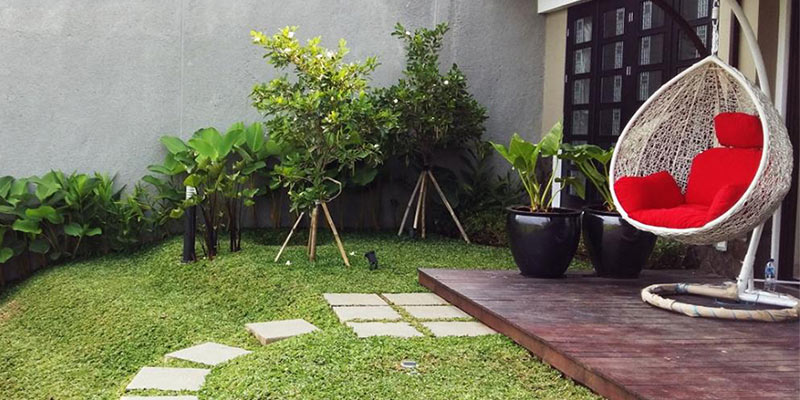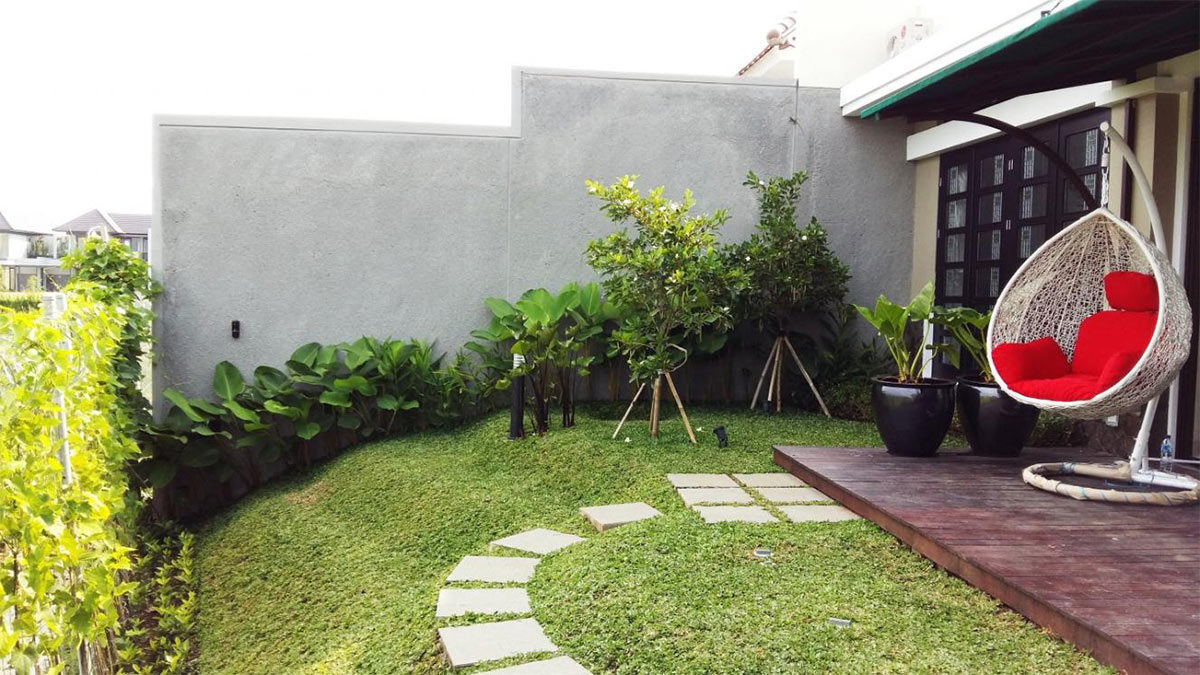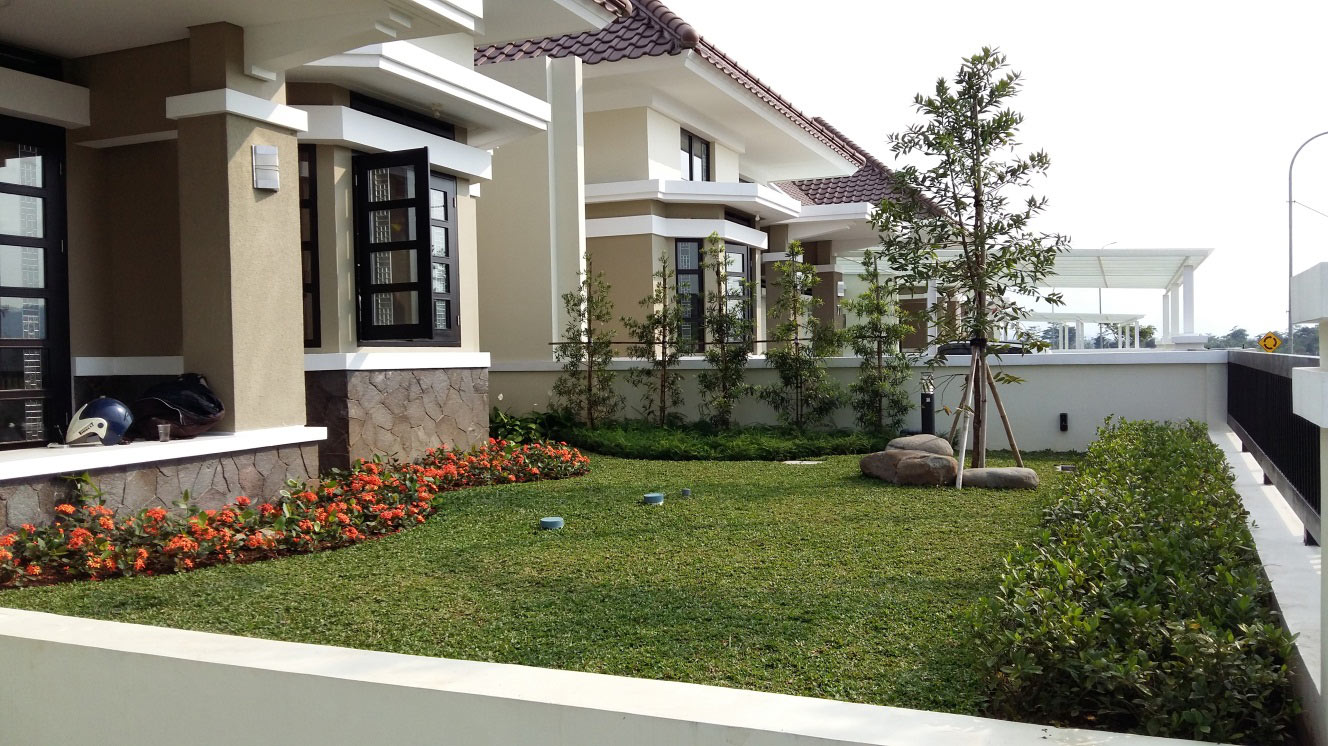
That is exactly the most common problem for someone whose own a house in the city. It may be true that urban people do not have a flair for handling living plants but lack of designs; poor soil preparation and the use of unsuitable plant material are mostly responsible for failure of gardens in crowded cities. If we can make our house receives a fair amount of sunshine and make some more well-drained foundations, I am sure a good looking and healthy gardens can be maintained in our yard.
Here are some simple methods to improve the appearance of an urban garden:
Redesign the garden
As we all know, planning the garden begins ideally with the selection of the property. If the site is to be in the city, the deciding factor is likely to be the size of the plot or the character of the neighborhood. Urban garden usually has clean, neat, simple and doesn’t include too many colors on its soft-scape area. It also uses some containers as planter box to deceive limited area of the garden.
In fact, after couple of years, the garden faces severe handicaps likely too often the garden designed by an unimaginative building contractor, enclosed by a board or picket fence, it consist of a rectangular plot of grass, surrounded by a concrete walk and clothes-poles stand at each corner. Such a designed positively prohibits a beautiful garden if left as it is and it makes the area, already too small, appear smaller than it is.
What to do then?
- Remove the clothes pole
Why don’t you provide a removable drying-rack for clothes drying which can be stored out of sight when not in use? The clothes pole can assume more space if we were making it permanent. - Get rid of the concrete walks
No concrete walks can make the yard appear considerably larger. Some of the block might be broken up to 2 feet square pieces and laid to stimulate a walk of broken flagstone in the new design. If irregular flagstones with crevices between are laid in the yard, we can plant such dwarfs as creeping thymes. - Remove the hideous high board fence
Replacing a high board fence with a picket fence will have a more pleasing appearance and admit more sun and air.
I was having some problems with my front yard garden a few years ago. My carport was made by a concrete walks and there were so many gravels in the soil. My garden receives full sunshine which is a good condition but it’s too much open on the situation. There were no filter to dust and those noisy vehicles from the street didn’t comfort me. So, i chose to replace the concrete carport with grass block to make more well-drained foundation in my garden. Another problem was my infrequently trellis fence was too open. For this reason, i chose to add pallet board and climbers in between the trellis. Thunbergia on my fence really make a different appearance and I love it.
Suggested Design
More than anything else, the house should be placed and surrounding designed from maximum comfort and convenience. As a general rule it should not be set in the middle of the plot, for it is the space left for gardens is too small for effective treatment. This is why we need a landscape architect to make garden designs.
I have some garden’s construction projects with the landscape architect of PT. Ruang Hijau, Indonesia. You can follow this link for further information about www.ptruanghijau.com and our garden projects.
Here is one of our urban garden projects:
- We chose the plat natural stones as path ways especially on a sloping land to make it more solid for walk. A specimen shrub or a smaller tree may be substituted on another corner of the yard to eliminate the lopsided appearance of the garden. Bricks and gravel are also appropriate for walks. Bricks will be very attractive when they become mellowed by weather and traffic. When the mosses come, it looks really beautiful. A gravel walk is satisfactory if laid on a well-drained foundation and contain sufficient binding material to hold the stone on the surface.
- The grass plot promotes a feeling of restfulness and serves as a setting for the planting of shrubs.
- The tree creates a point of interest. If there is enough sunshine, we can plant a flowering tree such as Tabebuia rosea. We can plant a larger tree for shade if the size of the yard is large enough.
- A seat, a sundial, garden lamp or a bird bath would serve a similar purpose in the garden which is balancing the composition and provides a point of interest at the termination of the wall.
- The small rock garden or a water lilly pool could be installed if the situation is open.
Soil Treatment and Humus Apply
The house is best placed on a gentle rise of ground, so that there is efficient outward drainage of water on all sides, yet it should be accessible without steep grades. The soil of the city is likely to consist solely which was dug out when excavating for the cellar. This condition is far from favorable for the growth of the plants. In this case, we need to improve the soil with the addition of humus to supply plant food. The humus supply should preferably come from decayed stable or barnyard manure, but if manure ruled out, other sources for humus must be investigated.
What we can do then?
- Adding peat moss bales to the soil. Peat moss is the best on absorbing the moist. If the soil is sandy or composed mostly of coal ashes, make it double quantity during the initial preparation of the soil. When the soil already acid, the peat should be neutralized by the addition of lime before mixing it with the soil. About ½ pound of ground limestone or a smaller quantity of hydrate limes may be expected to neutralize a bushel of peat moss.
- Tree leaves and garden refuse is another source of humus supply. You can provide a large container or slatted crate filled with leaves and garden trash, screened from the view of course. If each 1 foot layer is seasoned with a sprinkling of lime and fertilizer, its decay will be accelerated.
- Fertilizer can supply the lack of nutrition of the soil. We can use the commercial fertilizers that contain nitrogen (N), phosphoric acid (P) and potash (K). One of approximately 5% N, 10% P and 5% K used at the rate of 3 to 4 pounds to 100 square feet will probably prove suitable.
- To discourage cats and dogs who often to scratch up tender seedlings and raises havoc generally, we can use 1½ to 2 teaspoonful of 40% nicotine sulfate in 1 gallon of water then sprayed them around the garden.
Suitable plants for the urban garden
Owing to dust, smoke, gas and impure air, the number of plants which will thrive under city conditions is strictly limited but there are enough to give variety. A number of plants are reliable for a temporary display but the may have to be renewed from year to year. If these plants were used on a large scale the cost of gardening with them might be prohibitive; but in an urban garden one’s requirements are modest in quantity, so their use may be recommended.
Here are some of the suitable plants for urban garden:
- Trees
Norway Maple (Acer platanoides), Tree of Heaven (Ailanthus altissima), Maidenhair (Ginkgo biloba), Flowering Cherries, Magnolia, etc. - Shrubs
Japanese Barberry (Berberis Thunbergii), Rose of Sharon (Hibiscus syriacus), French Hydrangea (Hydrangea macrophylla), Pussy Willow, Periwinkle, etc. - Vines
English ivy (Hedera helix), Rose, Wisteria, Ipomoea, Cinnamon vine (Dioscorea Batatas), etc. - Perennials
Day Lily, Iris, Sedum acre, Moss phlox (Phlox subulata), Hosta, etc. - Bedding Plants
Pettunia, Geranium (Pelargonium zonale), Begonia semperflorens varieties, Dahlia, English Daisy,etc. - Annuals
Calliopsis, Euphorbia marginata, Portulaca grandiflora, Four o’clock, Marigold, etc.
Well, I hope you can enjoy your beautiful urban garden every day now.



